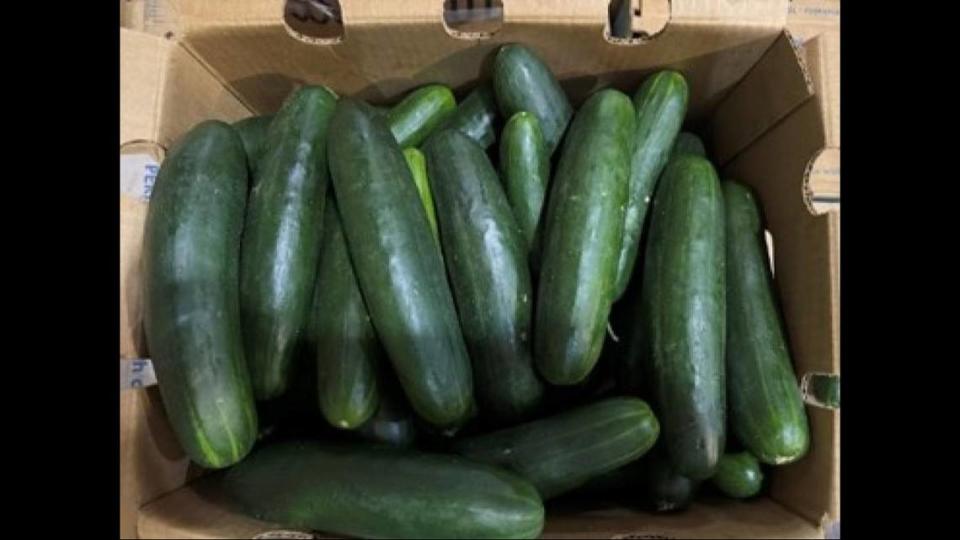The latest on salmonella outbreaks and cucumbers: 449 people ill, another Florida link
Another Florida connection has been found in the salmonella outbreaks linked by the FDA and CDC to cucumbers.
Here’s what to know in this week’s update:
How many salmonella outbreaks are there?
Two outbreaks are being investigated by the FDA, CDC and state agencies: salmonella Africana and salmonella Braenderup. The FDA and CDC combined the investigations of the two outbreaks because the sickened people interviewed were in the same places, happening at the same time and ate the same foods.
How many people are sickened and where are they?
Between the two kinds of salmonella, there are 449 people known to be sick in 31 states and the District of Columbia. There are 125 hospitalizations from that group, but no deaths.
The CDC says Pennsylvania has the most illnesses with 60. New York is second with 57, and Florida has 52.
Along with the District of Columbia, other states hit are Alaska, Arkansas, Connecticut, Delaware, Georgia, Illinois, Indiana, Iowa, Kentucky, Maine, Maryland, Massachusetts, Michigan, Minnesota, Missouri, Nevada, New Jersey, North Carolina, Ohio, Oklahoma, Pennsylvania, Rhode Island, South Carolina, Tennessee, Texas, Virginia, Vermont, Washington and Wisconsin.

What’s the latest Florida connection to the outbreak?
“Laboratory, epidemiological, and traceback data have determined that cucumbers from Bedner Growers .... is a likely source of illnesses in this outbreak,” Tuesday’s FDA update said, “however, this grower does not account for all the illnesses in this outbreak.”
State records say Bedner Growers is run out of an office by President Charles Bedner, Vice President Bruce Bedner and Secretary Stephen Bedner out of an office just over six miles from their fields, both in unincorporated Palm Beach County. The listed phone number for Bedner is disconnected.
Bedner supplied Palm Beach-based Fresh Start Produce Sales, the first stop on the tracking of the cucumbers.
Fresh Start’s cucumbers got linked to the salmonella Africana outbreak, but further testing found the salmonella in Fresh Start’s cucumbers to be salmonella Bareilly.
READ MORE: Two salmonella outbreaks plus a third involving Florida cucumbers
When the FDA inspected Bedner Growers, the agency said in Tuesday’s update, it found salmonella Braenderup in untreated canal water used by Bedner and the strain of Braenderup sickening people in the current outbreak. Other types of salmonella were found in the soil and water at Bedner.
Also, the FDA said, Bedner “supplied cucumbers to multiple points of service where ill people reported purchasing or eating cucumbers.”
“Bedner Growers’ cucumber growing and harvesting season is over,” the FDA said. “There is no product from this farm on the market and likely no ongoing risk to the public.”
What is salmonella?
Salmonella is one of the most common foodborne illnesses, the the U.S. Centers for Disease Control says, striking 1.35 million people in the United States over the course of each year.
Most people don’t require hospitalization (about 26,500 of that 1.35 million do) and deaths are rare (although that does happen to about 420 of that 1.35 million). Children under 5, adults over 65 and people with weakened immune systems get the worst of salmonella. Most people start feeling stomachaches, fever and diarrhea within six hours or six days from eating salmonella and recover in four to seven days so most outbreak illness counts are low.
Chickens and chicken products, even processed frozen chicken products, are often a source of salmonella. When working with eggs or raw chicken, wash your hands often, wipe up any stray liquids and make sure the dish is cooked through. Sprouts and vegetables can also bring salmonella.
“Never leave perishable food out for more than 2 hours (or 1 hour if exposed to temperatures above 90°F),” the CDC warns in its food safety tips.

